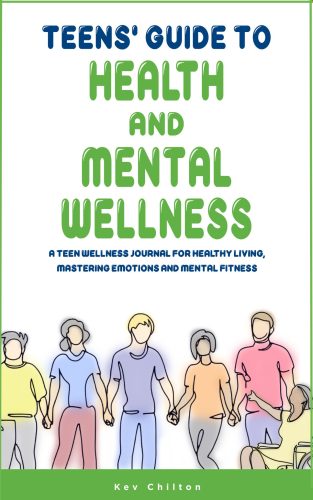Does it frustrate you when life overwhelms you more than it bothers your friends?
But what if I told you that your feelings are completely valid and natural?
One can never be sure how different circumstances are going to impact them. Tens of incidents happen in a day, and each one of them can wear you down. You can go from laughing at the top of your lungs to crying your eyes out without even realizing it.
But most of the changes in mood, except for the ones driven by hormones, occur quite gradually. This book, Teens’ Guide to Self-Care and Wellness, will be your lens to evaluate your emotions. It includes:
● Recognizing negative indicators for mental wellbeing.
● The key ingredients for mental wellness.
● Physical strategies for improving mental health.
● First aid for anxiety and depression.
● How to build a personalized wellness toolbox.
We all know how to stay physically fit. Our elders have sufficiently taught us about the importance of working out and eating healthy. However, mental wellbeing is not so straightforward. It is only natural for such intricate things to be complicated and challenging to diagnose and treat.
Things that bother you today won’t even matter when you grow up. But growing up has challenges of its own.
Learning to cope with stressors appropriately in your teenage years will ease your life as an adult. Grab this guide as an opportunity and start prepping!
Targeted Age Group:: 13-18
What Inspired You to Write Your Book?
Having a stark choice of fighting teens on the city streets or helping them find their way in life, Kev Chilton knew which way he wanted to go!
For most of his working life, he was an inner-city cop and detective, concentrating on murder, gun crime, and other serious offences.
However, he joined the police as a 16-year-old cadet and early in his career, he was tasked with helping young offenders, which quickly became his speciality. He noticed that by simply listening to the problems young people were concerned with, the majority were prepared to listen to him back. He built trusting relationships with most, who were happy to listen to and act on his advice. Many responded positively, and they moved confidently into adulthood.
Throughout his police service, he arranged youth clubs, attended schools where he gave talks and maintained an open-door policy, encouraging any young person with a problem to approach him privately afterwards. He also set up and operated specialist juvenile squads geared towards helping those who had gone off the rails. The results were excellent, and he was never happier in his job than when he could redirect a young person’s life onto the right path.
It was a fulfilling time in his life, and it helped him understand the constantly evolving challenges teenagers face as they transition to adulthood. More specifically, as times change, so do the needs and circumstances of young people. Choosing the path of mentorship over the chaos of city streets, he has dedicated his journey to helping teenagers, steering them away from conflict and towards a brighter future.
Through a series of empowering ‘How-to’ guidebooks for teens, Chilton has become a beacon of support for them.
Today, he is proud to utilise his extensive experience to make a positive impact. He is particularly attuned to the unique issues that young people are currently grappling with, and one of his goals is to bridge the gap between them and the adults in their lives.
Today he lives in a cold barn where he constantly fights the elements—a losing battle that keeps him off the streets!
******************************
Links to Purchase eBooks – Click links for book samples and reviews
Buy this book On Amazon
All information was provided by the author and not edited by us. This is so you get to know the author better.

